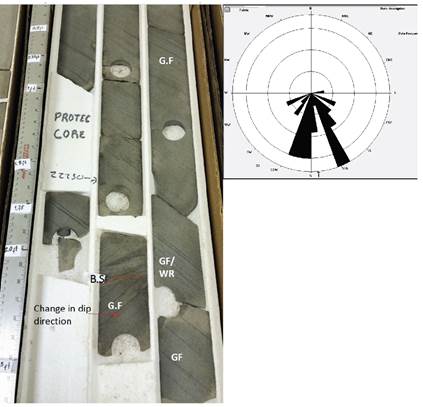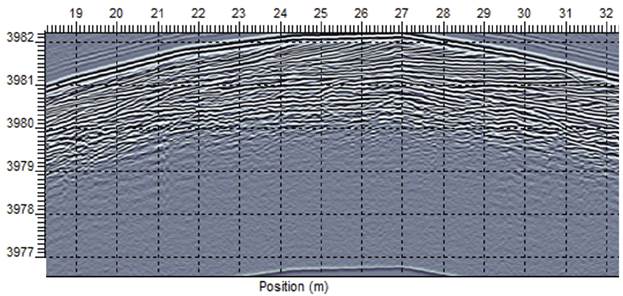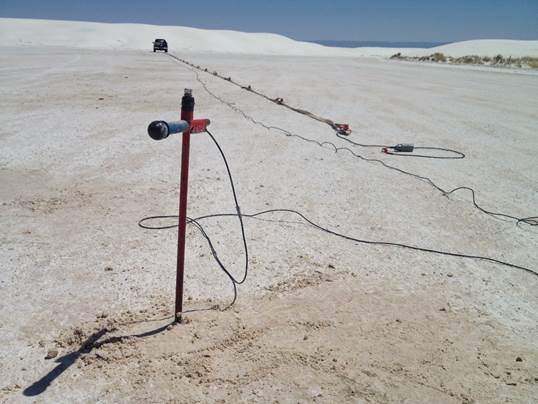Reports: DNI853544-DNI8: Testing Models of Dune Field Pattern Formation in Ancient Aeolian Stratigraphic Successions - Permian Cedar Mesa Sandstone, Utah and Jurassic Norphlet Sandstone, Gulf of Mexico
Ryan Ewing, PhD, Texas A&M University
Project year 1 involved gathering a team and ramping up
toward developing an aeolian stratigraphic model that incorporates spatial
heterogeneities related to the self-organization of wind-blown dune fields. Norphlet Sandstone. The Norphlet Sandstone is an aeolian oil and gas reservoir in
the Gulf of Mexico and an opportunity to develop and test our model with
subsurface data. Master’s student Maria began in January of 2014 and has been
gathering background data for the Norphlet Sandstone
Project. She collected a GIS database of Gulf of Mexico maps fr om previous work and identified
the relevant core that needed to be measured and sampled at the Alabama
Geological Survey. She coordinated with the core laboratory in Alabama to
measure core for 1 week during July. During this time she measured ~ 700 ft of core in two locations and gathered geophysical logs
for the cores (Fig. 1). She will return this year to complete measuring other
core samples. She has thin sections from these cores and will be performing
grain size and shape analysis of the primary aeolian grains to be used in
environmental reconstruction.
Cedar Mesa Sandstone: The Cedar Mesa Sandstone, exposed in
central Utah near Canyonlands National Park, provides the key exposures for our
outcrop analysis. Undergraduate John is taking the lead on learning our Leica ScanStation t-lidar and RTK GPS,
which will be a primary field tools. He has tested the equipment around campus
and in the laboratory and is ready for our field campaign in October of 2014.
We will spend several days gathering preliminary data to refine our data
analysis methods. We are looking for a MS or PhD to join the team next year and
take over as John moves off to graduate school. White Sands Dune Field:
At a coarser-scale, we gathered land seismic at two
locations within the dune field to identify basin-scale controls, such as paleoshorelines or faults, on the accumulation of the dune
field (Fig 1b). Initial results from the GPR data show highly resolved
centimeter-scale stratigraphy of protodunes that
indicates these bedforms adjust to semi-annual wind patterns and generate
low-angle bounding surfaces that represent a shift in the seasonal winds (Fig.
1a). We will look for this stratigraphy in Utah during our fall and summer
field campaigns. More processing is underway on the seismic, but initial
thoughts are that paleolake clay layer is visible in
the seismic and marks the beginning of sand accumulation (Fig. 3).
Additional processing, analysis and interpretation is
underway for both datasets and results will be presented at AGU December 2014
by Texas A&M Geophysics Undergraduate Patrick
Wagner, Professor Bobby Reece and the PI.
Professional Development:















